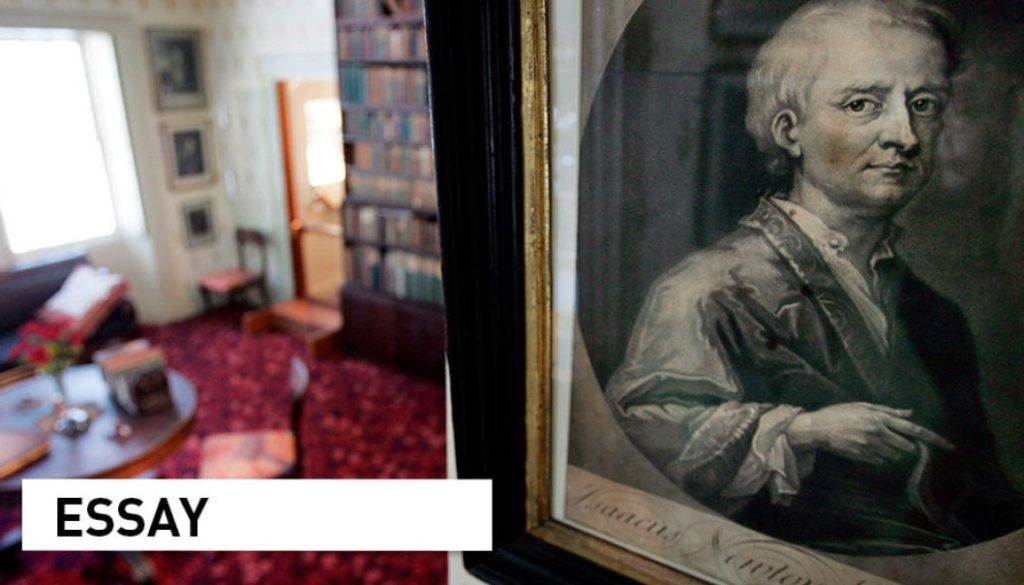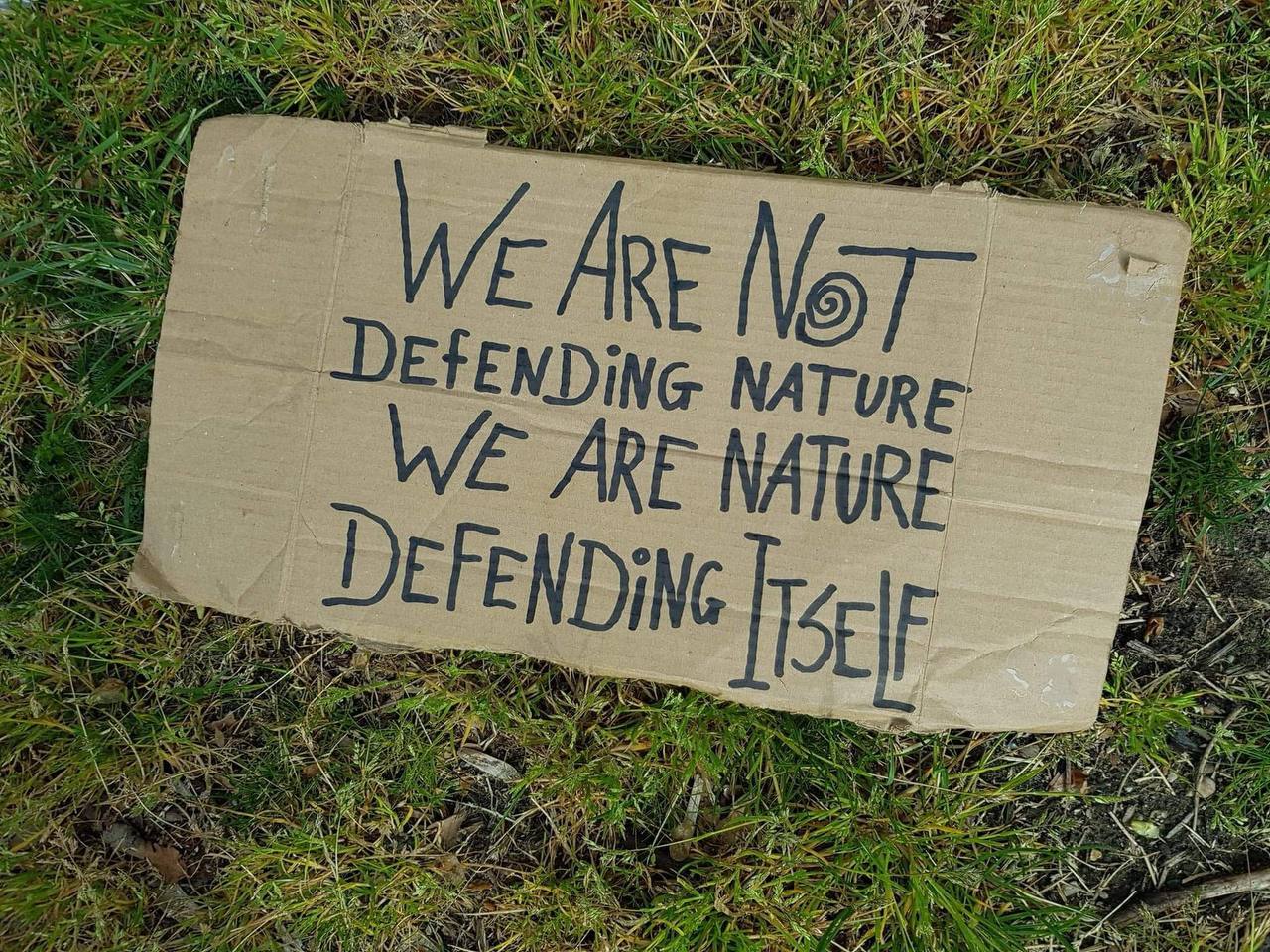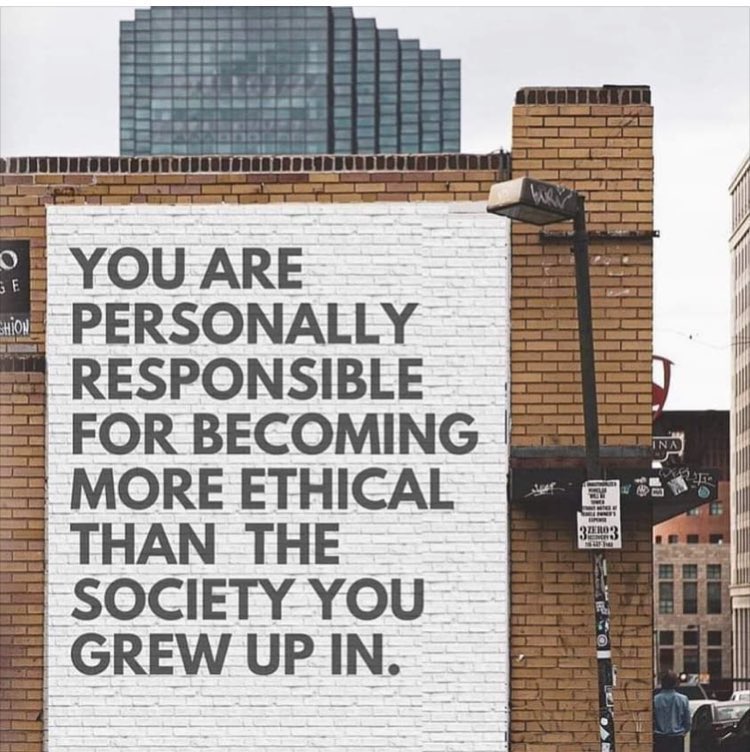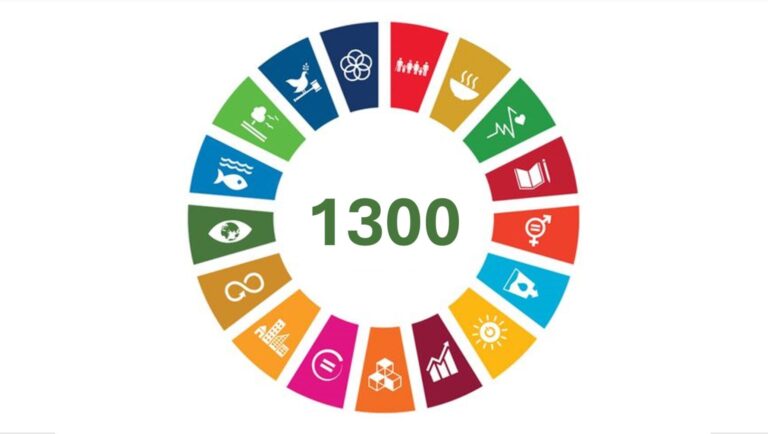
ESSAY: Climate change, loss of biodiversity, and degraded ecosystems: we are in trouble and something needs to be done. We need to change, and we know what to do. But we probably need some help on how to proceed. Maybe we can be inspired by Isaac Newton’s three laws?
Translated by Bergensia from Norwegian Original published at Forskning.no

Erling Holden, PROFESSOR, NMBU

Kristin Linnerud, PROFESSOR, NMBU
Let’s first go back to 1962, when the American marine biologist Rachel Carson scared us off. In the book Silent Spring (Den tause våren) she writes about spring without birdsong (Carson, 1962). The birds have died due to the increasing use of chemical synthetic pesticides (especially DDT) in American agriculture and forestry. The book was a gloomy read and created enormous attention worldwide on a topic the general public had had little knowledge of until then.
In a short time, the book became an international bestseller – and in many ways, it marks the beginning of the modern environmental movement. Several leading environmentalists, such as the philosopher Arne Næss, point to Silent Spring as the start of their own environmental commitment (Sessions, 1995). Some of the strongest forces in American society were also engaged, namely the chemical industry, industrial agriculture, and forestry. They tried to stop the release. When they failed to do so, they launched blackmail campaigns against Carson. She was accused of being both “fanatical”, “hysterical” and “communist”.
One million species are endangered
Today, sixty years later, we still have cause for concern. Not only for the birds but increasingly for the state of nature as a whole. This concern was fueled when the Nature Panel presented its first main report two years ago. The report stated that human activity now threatens the existence of over one million species. At the same time, the Climate Panel writes in its recently presented sixth main report that the climate is not so good either. As if this is not enough, the UN shows that we are not in a good position to achieve the ambitious sustainability goals they launched a few years ago.
The big picture is thus a globe that is moving at a constant speed in a straight line towards an even more unsustainable future.
Here we must hurry to add an important point. The UN’s sustainability goals are not just about climate and nature, or the environment as we like to call it. Equally important is the fight against poverty, reducing inequalities, and contributing to a decent life for all the world’s inhabitants for generations to come (Holden & Linnerud, 2021). For Norway, however, the sustainability goals are mostly about the environment (this is admittedly a truth with modifications, and we will return to that at the end).
We know what we should do, but how?
The environment, and thus also us, is in trouble, and we must do something. We need to change the way we think about and treat the environment. We need a green shift. We know pretty well what we should do to change, but how do we do it? This is where Isaac Newton can help us along the way.

However, let us first spend some time on what we should do. This is not primarily a technological issue. We already have (almost) all the technology we need. We have electric cars, hydrogen boats, plus houses, carbon storage, and organic food production. Many other technologies are proven and ready to be rolled out. In other words, this is not where the shoe pinches. What is missing is the will and perhaps also the knowledge to use these technologies. Perhaps we also lack the will and knowledge to implement necessary non-technological changes, such as driving a smaller car, eating less meat, and staying closer to our home during the holidays. We know what we can and should do.
But then: how to change us and make a green shift? How to adapt (in the international research literature this is often called transition or transformation) to a society where consideration for climate and nature receives the attention it deserves? This is where we can get some help from Newton, or more specifically his three laws (Green, 2020).
The social sciences can draw inspiration from the natural sciences
Newton’s three laws are described in the work Philosophiae Naturalis Principia Mathematica, known as Principia, which was published in 1687. Today, the laws are fundamental in mechanics and are often called the laws of force or the laws of motion. It is obviously a good start because change requires both power and movement.
Here we must add another point. The natural sciences, to which the laws belong, are fundamentally different from the social sciences. The social sciences are about human behavior and are in no way subject to the same finality that we can find in the natural sciences. A stone follows a certain pattern of movement when dropped from a height. It is not affected by our observation of it. A person’s behavior, on the other hand, cannot be determined with certainty in advance; it may end up doing something completely different from what we expect from it, simply because we observe it.
In this sense, the natural sciences and the social sciences are fundamentally different. Nevertheless, it must be possible for the social sciences to be inspired by the natural sciences. One must be able to be somewhat interdisciplinary.
Back to Newton’s three laws.
Newton’s first law: the law of inertia
Newton’s first law states that if a body is at rest or moving at a constant speed in a straight line, it will remain at rest or keep moving in a straight line at constant speed unless it is acted upon by a force. It thus requires a force both to set a body in motion and to change the speed and direction of the body.
In our opinion, the law perfectly describes the situation we are in. The world, Norway, companies, municipalities, and individuals have for a long time moved – and they continue to move – in a constant, unsustainable movement. There has been no force involved that changes the direction or speed of this movement.
Maybe that’s a slightly unfair claim. There are many small forces that for a long time have tried to influence both the direction of movement and speed. The environmental movement, for example, does this every day. Ambitious individual companies and brave municipalities are also trying their best. And many individuals are fighting a tireless battle for greener and more sustainable practices. It is, therefore, more correct to say that there has not been a sufficient force to create a major change in course or the whole green shift as we call it.
The big picture is thus a globe that is moving at a constant speed in a straight line towards an even more unsustainable future.
In the research literature on sustainable change, it is the regime that manages and defends this constant movement (see, for example, Geels et al., 2016; Köhler et al., 2019; Markard, Raven, & Truffer, 2012). The regime is the existing one, as we have always done. The regime is current policy, established practices within ministries and directorates, and not least cemented attitudes and practices of each of us. The regime is difficult to change. It, therefore, takes a lot of force to change the regime’s course of action and thus movement. So we continue to do what we have always done: we open new oil fields, we build new highways, we put economic considerations ahead of animal welfare, and we go on a weekend trip to New York (as soon as coronary restrictions allow).
Newton’s point is that without sufficient force no change will take place. We will continue our steady course towards an unsustainable future. That may sound obvious. But sometimes it is necessary to emphasize the obvious: Nothing happens by itself!
Doesn’t this sound so cheerful? Are there really no forces that can help change course? Yes. They just have to be big and quick. That’s what Newton’s second law tells us.
Newton’s second law: mass and acceleration
Newton’s second law states that when a body is affected by one or more forces, it will accelerate in the direction the forces act. The sum of the forces on the body is equal to the mass of the body times the acceleration of the body.
If we are to change the regime’s movement, then we need a large enough mass that together provides sufficient force which in turn provides movement. Alternatively, a small mass with a large acceleration can give the same motion. We have more faith in mass than acceleration when it comes to major, societal changes. A hyperactive environmental movement or an innovative technology (small mass) with increasing acceleration quickly erodes the regime’s inertia. It is only when the mass becomes large enough that the regime cannot shake off the cries of the masses, but must meet the masses. Only then will there be change.
In the mentioned research literature, the forces that arise as a result of mass and acceleration are called niches and landscape changes. Niches are the innovative and most often technological solutions that challenge the regime’s usual course. They have a difficult task because the regime usually does not look with goodwill at new ways of doing things. They like to fight back (more on this in Newton’s third law). But now and then the niches still succeed. In Norway, the electric car is a good example of that. It started as a niche that challenged petrol and diesel cars. Throughout the 1990s, a small group of enthusiasts put pressure on the regime, and eventually, they succeeded in a way that can only be called sensational. In 1997, 147 electric cars were registered in Norway. Today, there are about half a million so-called rechargeable cars on the roads. Awesome!
We cannot look at and touch democracy, women’s liberation or equality between people. Nor can we see and touch the green shift. But we have the opportunity to imagine it, and we also have the ability to work together collectively to achieve this idea.
Yuval Noah Harari, 2014 in Sapiens: A Brief History of Humankind
However, it was not the acceleration that was decisive for the electric car’s success. In fact, it went pretty slow in the beginning. It was rather that the mass eventually became large enough. A lot of companies that could make money on electric cars, politicians who needed a good environmental cause, and not least motorists who wanted to be involved and make a difference.
The mass eventually became large enough to change the landscape – which are large, external changes that push the regime and force it to change course. It can be natural disasters, man-made climate change, or pressure from a sufficient number of politicians, companies, and individuals with demands for change. History has shown that no regime, in the long run, can withstand such pressure from a large enough mass.
How to create a large enough mass to make changes? In the book Sapiens: A Brief History of Humankind, the Israeli historian Yuval Noah Harari reminds us that the most important things in the world exist only as notions in our heads (Harari, 2014). We can not see and touch democracy, women’s liberation, or equality between people. Nor can we see and touch the green shift. But we have the opportunity to imagine it, and we also have the ability to work together collectively to achieve this idea. The American economist Robert Heilbroner points out that once an idea has taken root in enough people, it has greater power of change than presidents, armies, and laws (Heilbroner, 2011). The ideas – and the stories about them – are thus the biggest landscape change that can move the regime’s direction. And to remind you: the regime is not just politicians and bureaucrats. The regime is also our own ingrained attitudes and practices.
Then everything is fine, right? Do we just need a big enough force based on a story about the green shift that many enough can recognize themselves in ?? That need not be the case. Newton’s third law creates uncertainty about how this story should be presented in order to gain support.
Newton’s third law: Force is equal to counterforce
Newton’s third law states that when one body acts on another body with a force, the other body will act back on the first with an equal force in the opposite direction. The two forces mentioned in Newton’s third law are called force and counterforce. Force and counterforce always act on two different bodies and are equal in size and opposite.
It is not so difficult to understand that this is so. Hit your fist in the wall, and you will notice that the wall strikes back. Throw a ball as hard as you can against a wall, and you will soon find that the wall throws the ball back (almost) just as hard. Scream at someone, and you will soon notice that they are screaming just as loudly back.
For the green shift, this means that it is crucial to think about the opposing forces that will be formed in any case. One should also think about how the story is received by those ones it is trying to convince.
In the novel Man and the Powers, Olav Dunn gives a good picture of what happens if you want too much too quickly (Duun, 1968 [1938]). If you want to convince someone that they should believe a story, you have to think a little, like when you fish for halibut. Once you have caught the halibut on the hook, it is useless to pull in the line as much as you can. Then the halibut lies across and becomes impossible to get up. You must rather use a list and pull carefully so that the halibut almost without noticing it comes upright. Then you can gently pull the fish in.
Sometimes you have to do what needs to be done, even if it is uncomfortable for both the one who decides and the one who is decided above.
In Norway the so called “Røykeloven” from 2004 decreased smoking in the population by 50% within 10 years.
We are not trying to say that people are like the halibut. Nor that one should use cunning to convince anyone. We want to point out that you have to be careful not to step too hard on the gas. If you shower and perhaps overwhelm people with the right solution, you probably only achieve that, yes, they stand up and resist. No halibut and no green shift that way.
It is not difficult to find examples of measures to promote the green shift being met with opposition. Strong resistance. When the Norwegian Water Resources and Energy Directorate a few years ago presented a plan for the development of wind power in Norway, it triggered a wave of protesters across the country often dressed in traditional national costumes (NVE meet lots of controversy for the plan, but they actually did only what the politicians had asked them). The counter-forces against the plan were mobilized to the extent that new wind power projects have so far been shelved in anticipation of “better weather”. Other examples of green measures are proposals for various forms of environmental taxes that have predictably led to toll riots, yellow vests, and furious cyber-trolls.
You can not negotiate on everything. Some will always be dissatisfied and fight back. Sometimes you have to do what needs to be done, even if it is uncomfortable for both the one who decides and the one who is decided upon. However, it should be possible to absorb the large mass, the one that creates the sufficient force for change. Experience with the introduction of various types of restrictions and measures in dealing with the coronary pandemic shows that it is possible. If we get as much support for the need for the green shift as for the acceptance of corona measures, much has been done. So how to get such support?

Three tips for the way forward
While many experience threats to climate and nature as distant and vague, concrete environmental measures will be perceived as concrete and painful. And while some interests benefit from the measures, others will lose out on them. This makes environmental policy particularly challenging.
What can be done?
First, we must communicate why we should work towards this goal. We must, as Harari emphasizes, tell stories that touch us, that engage and are understood. Those who work for a green shift must never settle for conveying a form of truth that everyone understands, and that the skeptics are ignorant who have not understood anything and can therefore easily be overlooked.
On the contrary, the British philosopher John Stuart Mill points out that all truths must be substantiated and defended often and fearlessly. Otherwise, no matter how true they are, they will be seen as dead dogmas and not a living truth (Mill, 2011). The green shift then risks becoming a formal exercise without goals and meaning. The biggest danger, according to Mill, is that truth without a continuous and fearless defense ends up as easy prey for those who attack it. Without weapons, the supporters of the green shift are left defenseless, and skilled demagogues get the attention they hardly deserve. At the same time, it is important that the supporters of the green shift – in line with Newton’s third law – do not go too hard.
Poverty, justice and the environment cannot be seen as isolated problems. They affect each other, and they are affected by each other.
Secondly, the green shift must be seen as fair. The ongoing discussions about new environmental taxes, more toll rings, increased inequality, and higher taxes on aquaculture and wind power clearly show that the green shift cannot be detached from an idea of justice.
It was precisely this recognition that was the most important contribution to the World Commission on Environment and Development when in 1987 they presented the report Our Common Future (World Commission on Environment and Development, 1987). The report clearly stated that fighting poverty, ensuring justice, and protecting the environment are several aspects of the same issue. Poverty, justice, and the environment cannot be seen as isolated problems. They affect each other, and they are affected by each other. They are inseparable.
Such a realization probably does not make the green shift easier. But it makes it easier to get credible and acceptable stories about it.
Thirdly, the green shift must be the result of democratic dialogue. The Indian Nobel laureate in economics, Amartya Sen, stubbornly claims that the answers to why and how must take place in the form of an open, continuous, informed and democratic dialogue and what is important to us as a society and as individuals (Sen, 2009). In a democratic dialogue, your thoughtful opinion is as important as mine. At the same time, the exchange of opinions must be based on the best knowledge we have. It can not be up to anyone to mean what they want.
Maybe we lose a few battles, but win the war
All options for a democratic dialogue – from trusting the green dictator who tells you how to act (but not necessarily why), to trusting the green business leader (who tells you why you should choose their product, but not how else to live your life) – are worse choices.
Democratic dialogue can sound boring, inefficient, and time-consuming. And that’s it. In any case, we must have faith that the slow, democratic dialogue provides good and lasting solutions – or stories if you will.
Maybe we will lose some battles with this democratic dialogue. In the long run, at least, the chances we have of winning the war against an unsustainable society increase.
References
Carson, R. (1962). Silent spring: Houghton Mifflin Company.
Duun, O. (1968 [1938]). Menneske og maktene: Gyldendal.
Geels, F. W., Kern, F., Fuchs, G., Hinderer, N., Kungl, G., Mylan, J., . . . Wassermann, S. (2016). The enactment of socio-technical transition pathways: a reformulated typology and a comparative multi-level analysis of the German and UK low-carbon electricity transitions (1990–2014). Research Policy, 45(4), 896-913.
Grøn, Ø. (2020). Newtons lover. Retrieved from https://snl.no/Newtons_lover
Harari, Y. N. (2014). Sapiens: A brief history of humankind: Random House.
Heilbroner, R. L. (2011). The worldly philosophers: The lives, times, and ideas of the great economic thinkers: Simon and Schuster.
Holden, E., & Linnerud, K. (2021). Bærekraftig utvikling: En idé om rettferdighet: Universitetsforlaget.
Intergovernmental Panel on Climate Change. (2018). Global Warming of 1.5°C. An IPCC Special Report on the impacts of global warming of 1.5°C above pre-industrial levels and related global greenhouse gas emission pathways, in the context of strengthening the global response to the threat of climate change, sustainable development, and efforts to eradicate poverty Retrieved from
Intergovernmental Science-Policy Platform on Biodiversity and Ecosystem Services. (2019). Global Assessment Report on Biodiversity and Ecosystem Services. Retrieved from
Köhler, J., Geels, F. W., Kern, F., Markard, J., Onsongo, E., Wieczorek, A., . . . Boons, F. (2019). An agenda for sustainability transitions research: State of the art and future directions. Environmental Innovation and Societal Transitions, 31, 1-32.
Markard, J., Raven, R., & Truffer, B. (2012). Sustainability transitions: An emerging field of research and its prospects. Research Policy, 41(6), 955-967.
Mill, J. S. (2011). On Liberty: The Project Gutenberg EBook of On Liberty [EBook #34901].
Sen, A. (2009). The idea of justice: Harvard University Press.
Sessions, G. (1995). Deep ecology for the 21st century. Retrieved from
United Nations. (2020). The Sustainable Development Goals Report 2020. Retrieved from
Verdenskommisjonen for miljø og utvikling. (1987). Vår felles framtid: Tiden Norsk Forlag.




34 Comments
Pingback: peaceful music
Pingback: snow jazz
Pingback: skool games alex hormozi
Pingback: slot pg แตกบ่อย เว็บตรง
Pingback: Hormone Screening Test
Pingback: recruitment agency
Pingback: บับเบิ้ล
Pingback: 7bet Thai
Pingback: สล็อตเว็บใหญ่ มั่งคงปลอดภัย
Pingback: weight loss
Pingback: รับทำวิจัย
Pingback: สล็อตออนไลน์เกาหลี
Pingback: Info
Pingback: Contact
Pingback: ตัวอย่างการวิเคราะห์ของ 7MSports
Pingback: fun88
Pingback: evakuators
Pingback: ดูบอลสด ไม่ต้องเสียเงิน
Pingback: gubet
Pingback: starburst
Pingback: สล็อตวอเลท
Pingback: Börja spela i Sverige
Pingback: magic mushroom strains
Pingback: ชุดกระชับสัดส่วน
Pingback: สินค้าจีน
Pingback: 7slots
Pingback: visit
Pingback: รับงานเอง
Pingback: เกียรติบัตรออนไลน์
Pingback: namayti57
Pingback: ระบบขายของออนไลน์
Pingback: เอเจนซี่ศัลยกรรมจีน
Pingback: clothing manufacturer
Pingback: Gra Sweet Bonanza